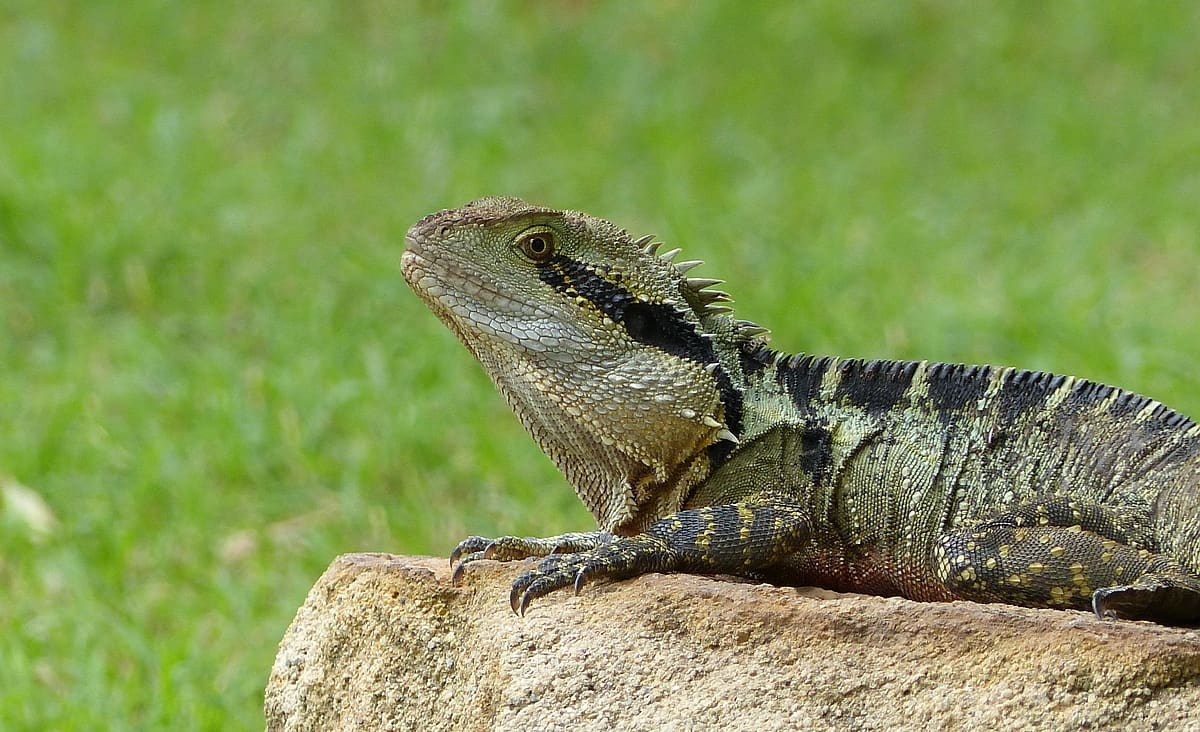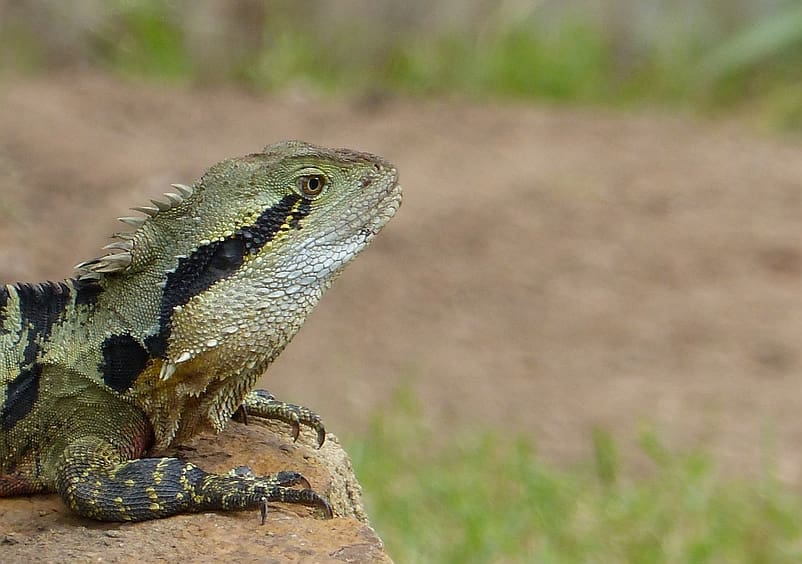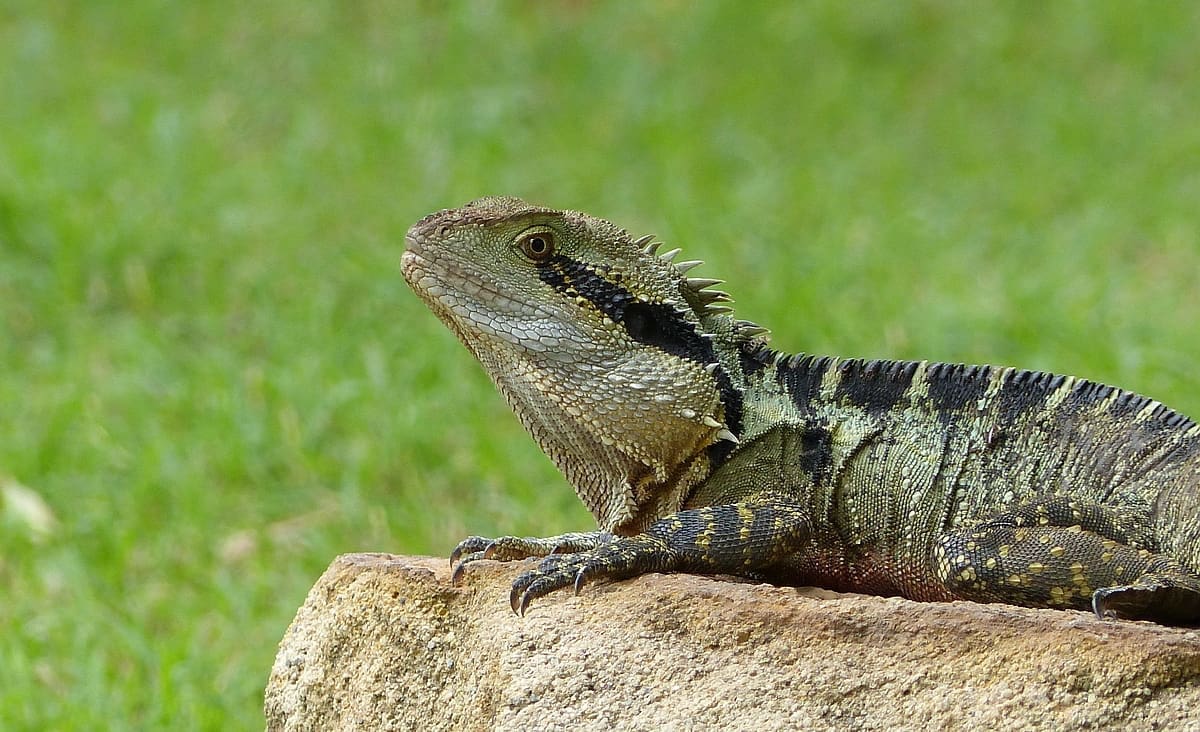Australia’s splendid biodiversity includes, apart from its marsupials, monotremes and splendid birdlife, a treasure of herpetofauna. Walking in the bush, or even in cleared countryside, you can spot water monitors, goannas, skinks and lizards. At Lone Pine Koala Sanctuary near Brisbane, Queensland, I came across a large lizard that had grown so confiding and tolerant of humans that it would barely budge unless physically moved out of the way. In a completely wild state, though, these reptiles are known to be a lot less insouciant with their lives. Understandably, for birds of prey and opportunistic snakes, or the odd predatory human, would love to knock them off for a good meal.

The Australian Water Dragon (Intellagama leseurii) is an agamid lizard found across most of the eastern part of Australia. As its name suggests, it favours water and may be seen swimming in ponds or streams that are not polluted with effluents. The Australian Water Dragon was earlier classified under the genus Physignathus, which includes other species of water dragon found in southeast Asia. In 2012, taxonomists agreed that it should be moved to its own genus, Intellagama, which includes two subspecies — the Eastern Water Dragon (I l lesseuri) and the Gippsland Water Dragon (I l howittii). The subspecies pictured here is the Eastern Water Dragon, recognisable by the dark stripe that runs from behind the eye to the animal’s ear.
Though reasonably common, the Australian Water Dragon is protected by law. Therefore, capturing or keeping them in confinement as pets demands some seriously discouraging paperwork. And that’s always a good thing, isn’t it?

By no means a small lizard, an adult male Australian Water Dragon can attain a length of about 3 feet, including its substantial tail. They are larger than the females, which usually grow up to 2 feet and have smaller heads than the males. Well adapted to water, these lizards are known to leap in for safety when disturbed and stay submerged for up to an hour.

The Australian Water Dragon is known to be an omnivore — besides insects, it also eats vegetable matter including algae and fruit. As is the case with some individuals of the human race, they are known to prefer an increasingly vegetarian diet as they age. Before you pull out your vegan propaganda kit, it might help to reason that younger lizards need more animal protein to fuel and sustain their growth spurts.
These lizards are also highly arboreal, nimbly shinnying up trees when threatened or while foraging in search of insects. Winter in the southern hemisphere sees the water dragons become less active. Breeding season is typically in the spring, and often sees males battling each other for dominance. Gravid females dig hollows in soft river sand to lay their eggs.
The Australian Water Dragons I met ignored me as I approached very close. Their confidence perhaps stems from exposure to humans, as well as their strong claws and an unenviable reputation for delivering a powerful bite. Having been bitten by lizards before, I knew what that meant. So I kept my wits about me and stayed on the good side of the dragon.
Meet these other interesting lizards
Elliot’s Forest Lizard | Sinai Agama | Kashmir Rock Agama
- Indian Nightjar, Sweet Child O’Mine - February 21, 2024
- TL;DR – What colour are a Black-winged Kite’s eyes? - February 13, 2024
- TL;DR – White-naped Woodpecker Double Bill - November 16, 2023

